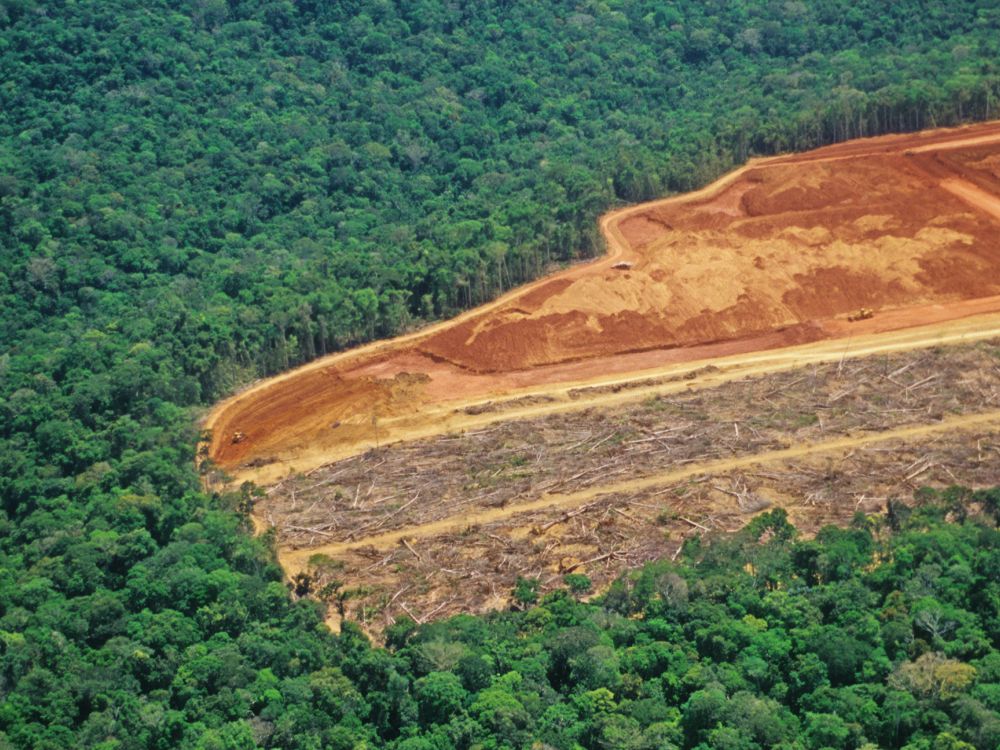
Climate breakdown and habitat destruction caused by human activity are killing off animal and plant populations across the world.
According to the UN, 1 million species are at risk of extinction globally. And in the UK, a quarter of mammals are at imminent risk of disappearing – including wildcats and hedgehogs.
But instead of doing more to protect nature, UK government looks set to rip up rules and regulations designed to protect it. Do your bit to help nature.
What's causing extinction?

Habitat loss
Habitat loss is down to the direct, often deliberate, destruction of natural habitats, like the ongoing fires in the Amazon. The decline in the size and quality of habitats has a direct impact on millions of plant and animal species which lack food, shelter, space and conditions to thrive as a result.

Pollution
Pollution of our land, soils, waterways, beaches and seas affects multitudes of species, and comes from a range of sources. Routine industrial emissions or spills, oil running off roads into rivers, and leaks from landfill waste sites are all culprits, as is litter.

How we farm
Intensive, industrial farming is linked to loss of wildlife, soil and water pollution, and poor animal welfare. We need to improve the ways we produce food – and learn from farmers in the UK and abroad who are cutting their emissions, restoring their soils and protecting their local ecosystems.

How we build
Insensitive and poorly managed growth of towns and cities (plus the roads and infrastructure that come with them) is driving habitat loss both in and around cities and far away through global supply chains.

Climate breakdown
We're starting to see how declining nature and climate breakdown are linked. Healthy, thriving nature can build resilience to a changing climate. Weakened, depleted nature and ecosystems make us more vulnerable.

Exploitation
Nature’s decline is also being driven by:
- hunting and the illegal trade in endangered species
- the spread of invasive species (the wrong plants and creatures in the wrong places)
- industries such as timber, mining and minerals extraction and commodities exploitation such as the production of cocoa, coffee, palm oil and soy.

Iconic species under threat

1. Chimpanzees
The now-critically endangered western chimpanzees live in the forests and savannah of west Africa's coastal nations, but some of these countries only support a few hundred chimps and their population in the Ivory Coast has declined by 90%.
Humans are eating into the chimps’ habitat – flattening forests to harvest timber, plant oil palm, build roads, extract metals and minerals, and expand towns and cities.
Chimps are supposed to be protected from hunting for bushmeat and trapping for the illegal pet trade, but law enforcement is weak.
We can help chimps by avoiding products that contain tropical hardwoods, bushmeat and palm oil – and by supporting forest restoration projects.

2. Emperor penguins
Antarctica’s emperor penguins are known for making lengthy treks to feed their young, but they need stable sea ice in order to do so. They use the sea ice to breed on and shelter from predators – and it supports the krill and fish stocks they feed on.
Sadly, they're now classified as "near threatened", and their numbers are set to collapse by the end of this century due to melting sea ice and food scarcity driven by climate breakdown.
Help keep the penguins’ empire frozen by avoiding health supplements containing krill-oil. And please support our work to keep global temperatures low and avert climate breakdown.

3. Lions
Lions used to roam across most of Africa, but now the vulnerable species are restricted to south of the Sahara desert and parts of southern and eastern Africa. They have disappeared from 26 African nations, and numbers in the past two decades have halved to around 20,000.
Their decline is driven by the destruction of their habitats, captive breeding for trophy hunting and the illegal trade in bushmeat. Lions also come into conflict with human populations who experience or perceive threats to their livestock as use of land encroaches on lions’ territory.
We can help restore numbers by supporting community-based conservation efforts that restore habitat, tackle illegal wildlife and trophy hunting trade and support local farmers to prevent land grabs.

4. Tigers
As many as 100,000 tigers once roamed across Asia. But there are now fewer than 4,000 left in the wild, with Malayan and Sumatran subspecies listed as "critically endangered" by the Red List of Threatened Species.
Reasons for their decline include hunting, poaching to supply the illegal wildlife trade, and the loss and break up of their habitat.
For tigers to recover we need to reverse the destruction of their habitat – allowing them to roam – and end the illegal trade in wildlife and their parts.

5. Painted wolves
Also known as African wild or hunting dogs, painted wolves were once found across much of sub-Saharan Africa from deserts to mountain areas. But with as few as 7,000 adults left, they're listed as endangered on the Red List of Threatened Species.
Many wolves die on roads and in snare traps, and catch infectious diseases that can spread in ways larger populations would be better able to withstand. These problems stem from coming into conflict with humans, their livestock and domestic animals.
Some conservation measures are in hand, such as education schemes to improve wolf-human coexistence – and better land management to allow wolves to extend their range.
More action is needed though, such as supporting habitat restoration.



